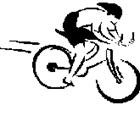题目内容
The a___________ temperature in Hangzhou last month was 22℃.
average

 世纪百通期末金卷系列答案
世纪百通期末金卷系列答案
| |||||||||||||||||||||||||||||||||||||||||||||||||||||||||||||||||||||||||||||||||||||||||||||||||||||||||||||||||||||||||||||||||||||||||||||||||||||||||||||||||||||||||||||||||||||||||||||||||||||||||||||||||||||||||||||||||||||||||||||||||||||||||||||||||||||||||||||||||||||||||||
Bears and humans often meet in National Parks. Although campers and hikers are warned not to feed the bears, many people ignore these warnings and feed the beasts anyway. When bears are used to people’s food, problems soon arise.
Bears like to eat a large variety of things, both meat and vegetable. Without human assistance, bears live nicely on roots, twigs, leaves of trees, insects and small animals. With people around, the bears’ tastes quickly expand to include sandwiches, hot dogs, hamburgers, and anything else they can temp humans into giving up.
Bears often develop clever strategies for getting people to let go their food supplies. More often than not, an unsuspecting hiker has taken off his or her pack for a rest only to have a bear charge out of the woods, grab the pack and quickly disappear into the underbrush with it. Hanging the pack on a tree branch won’t help. Bears have been known to climb up, jump off, and catch the pack on the way down. One mother bear stretched up with her baby on her shoulders to reach a pack stored on a pole. Many bears threaten people into giving up their supplies. Although a bear is unlikely to attack a person and would probably run away if screamed at, few people are willing to do so. Most people drop the pack and run the other way. This, of course, delights the bear. In some places, the Park Service installed some metal barrels with lids to help campers keep their supplies safe from bears. Although the bears were unable to open these containers, the effort was less than successful. Most campers, unable to tell the metal drums from rubbish cans, never used them for the intended purpose.
【小题1】Feeding bears on people’s food .
| A.brings the people a lot of fun | B.can cause problems |
| C.often causes injuries and deaths | D.helps bears survive |
| A.might be satisfied with what they had originally |
| B.would have starved long before |
| C.wouldn’t have enough food supply |
| D.would have hunted for other kind of food |
| A.If fed on sandwiches and hot dogs, the bears would no longer eat roots, twigs and insects . |
| B.It’s likely that bears would hurt people if the people didn’t give up their food. |
| C.Most people would frighten away the bears that would temp their food. |
| D.Seeing a pack, the bear would quickly snatch it and run away with it. |
| A.bears were clever enough to get the food in them |
| B.they were left open in the open air |
| C.people were not sure of their use |
| D.they were once used as rubbish cans |
Bears and humans often meet in National Parks. Although campers and hikers are warned not to feed the bears, many people ignore these warnings and feed the beasts anyway. When bears are used to people’s food, problems soon arise.
Bears like to eat a large variety of things, both meat and vegetable. Without human assistance, bears live nicely on roots, twigs, leaves of trees, insects and small animals. With people around, the bears’ tastes quickly expand to include sandwiches, hot dogs, hamburgers, and anything else they can temp humans into giving up.
Bears often develop clever strategies for getting people to let go their food supplies. More often than not, an unsuspecting hiker has taken off his or her pack for a rest only to have a bear charge out of the woods, grab the pack and quickly disappear into the underbrush with it. Hanging the pack on a tree branch won’t help. Bears have been known to climb up, jump off, and catch the pack on the way down. One mother bear stretched up with her baby on her shoulders to reach a pack stored on a pole. Many bears threaten people into giving up their supplies. Although a bear is unlikely to attack a person and would probably run away if screamed at, few people are willing to do so. Most people drop the pack and run the other way. This, of course, delights the bear. In some places, the Park Service installed some metal barrels with lids to help campers keep their supplies safe from bears. Although the bears were unable to open these containers, the effort was less than successful. Most campers, unable to tell the metal drums from rubbish cans, never used them for the intended purpose.
1.Feeding bears on people’s food .
|
A.brings the people a lot of fun |
B.can cause problems |
|
C.often causes injuries and deaths |
D.helps bears survive |
2.If people had never fed bears, the bears .
|
A.might be satisfied with what they had originally |
|
B.would have starved long before |
|
C.wouldn’t have enough food supply |
|
D.would have hunted for other kind of food |
3.Which of the following is TRUE?
|
A.If fed on sandwiches and hot dogs, the bears would no longer eat roots, twigs and insects . |
|
B.It’s likely that bears would hurt people if the people didn’t give up their food. |
|
C.Most people would frighten away the bears that would temp their food. |
|
D.Seeing a pack, the bear would quickly snatch it and run away with it. |
4.Bear-proof containers didn’t work because .
|
A.bears were clever enough to get the food in them |
|
B.they were left open in the open air |
|
C.people were not sure of their use |
|
D.they were once used as rubbish cans |
